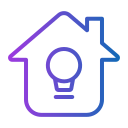
Trends Shaping the Future of Smart Homes
The evolution of smart homes is not just a technological advancement but a lifestyle transformation, reshaping how we interact with our living spaces. As homes become more intelligent, intuitive, and interconnected, everyday routines are redefined by automation, efficiency, and seamless control. The future of smart homes promises environments that learn, anticipate needs, and adapt in real-time. Innovations in connectivity, sustainability, energy management, security, and personalization are leading this shift, making homes safer, greener, and increasingly responsive to our unique preferences and daily patterns. Understanding these trends offers a glimpse into how our homes will support and enhance our lives in the coming years.
Revolution in Home Automation and Integration
Unified Smart Ecosystems
Unified smart home ecosystems are emerging as a cornerstone of the intelligent home, enabling disparate devices like thermostats, lights, security cameras, and appliances to communicate and operate in concert. Proprietary silos are giving way to open standards and interoperability, making it possible for users to control everything through a single app or voice assistant. This streamlining dramatically elevates user experience by reducing complexity and improving reliability. As more manufacturers adopt common protocols, homeowners benefit from unprecedented flexibility in customizing their setup and ensuring compatibility as their needs evolve. The result is a truly interconnected environment that transcends the sum of its parts, providing convenience and peace of mind.


Voice Control and Natural Interfaces
Smart homes are becoming increasingly intuitive thanks to the integration of advanced voice control and natural interfaces. The transition from traditional remotes and smartphone apps to conversational assistants marks a significant leap in user interaction. Residents are no longer limited to button presses or screen taps—they can now simply speak commands or rely on context-aware automation. This shift is particularly transformative for accessibility, offering enhanced independence to the elderly and those with physical limitations. As voice recognition technology becomes more sophisticated, it understands accents, intent, and even emotional cues, enabling truly personalized and effortless control over every aspect of the home.
Previous
Next
Advancements in Connected Security and Safety
Real-time monitoring and alert systems have revolutionized the way we think about home security. Today’s smart security cameras, sensors, and alarm systems deliver instant notifications directly to a homeowner’s smartphone or connected device when unusual activity is detected. Through high-definition video, facial recognition, and intelligent motion detection, residents can assess threats—or false alarms—without delay, from anywhere in the world. This functionality extends beyond burglaries to encompass hazards like fire, smoke, water leaks, and carbon monoxide. The immediacy and accessibility of these alerts drastically reduce response times and empower users to take swift action, which can be the crucial difference in emergency situations.
Focus on Energy Efficiency and Sustainability
Intelligent energy management systems are transforming homes into active participants in the broader energy ecosystem. Using real-time data and predictive analytics, these systems monitor consumption patterns and automate adjustments to lighting, heating, cooling, and appliance use. By responding dynamically to occupancy, weather conditions, and even utility rate fluctuations, smart homes optimize energy usage, reducing waste and saving money. Integration with solar panels, battery storage, and grid services enables households to generate and store their own power, further decreasing reliance on traditional utilities. As these technologies evolve, they will play a critical role in supporting energy grids and fostering a more resilient, sustainable energy future.

